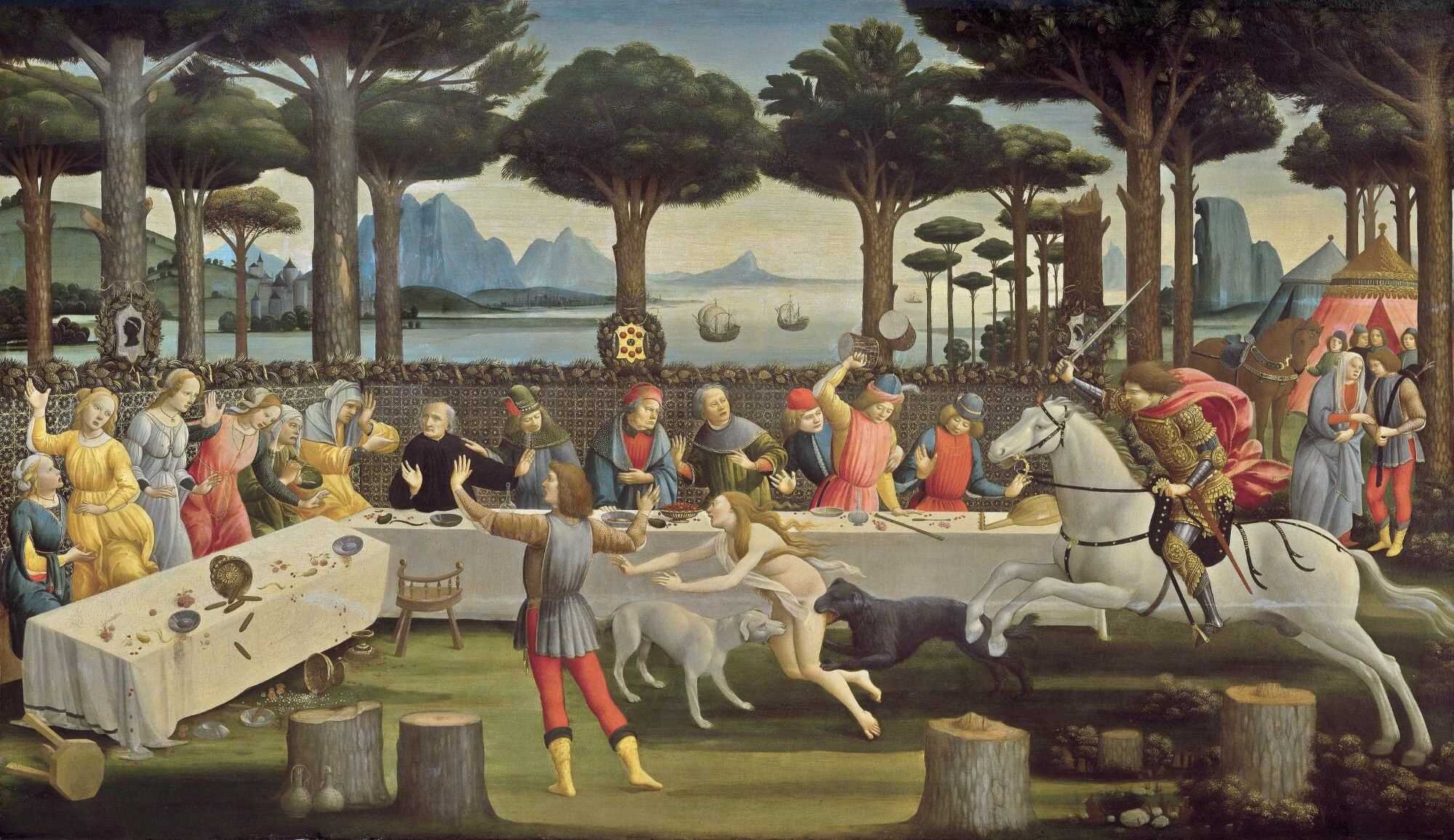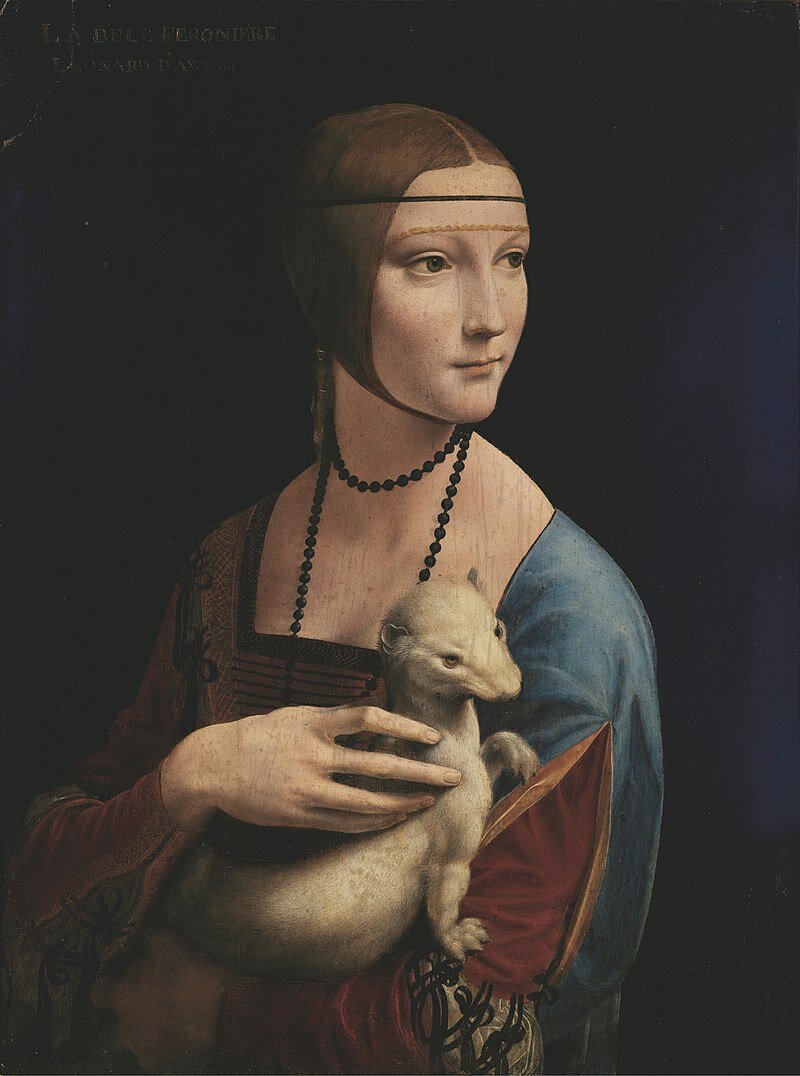The Groove Issue 37 - Four Ways to Design Your Own Renaissance
Welcome to the 37th issue of The Groove.
If you are new to The Groove, read our intro here. If you want to read past issues, you can do so here.
If somebody forwarded you this email, please subscribe here, to get The Groove in your inbox every Tuesday.
FOUR WAYS TO DESIGN YOUR OWN RENAISSANCE
Spring is in full swing, and with this season, hope, new ideas and a renewed interest in life abounds, especially compared to last year. Everyone needs a creative push once in a while, even more so after emerging from the Dark Ages.
There’s no better place to look for that push than in the Italian Renaissance, which was not only one of the most fruitful and exciting periods for art production, but as a revolutionary point in history it was filled with new ideas in literature, business, architecture, politics and science too. Here are four ways to design your own:
Humans As the Measure of All Things
Between the 14th and 17th centuries, Florence’s common denominator was to rediscover the work of Classical and Ancient Greece and to place humans at the center of it all. This not only included the empowering assertion that humans can do so much, but also the absolute conviction that there’s nothing as powerful as the human mind. By and in itself, this is a belief you should embody as your daily motto.
Don’t Rest Until You Make Your Thoughts Visible
Sandro Botticelli, Primavera, late 1470s or early 1480s, tempera on panel.
In the late 1400s, this mindset about humans as the most important and decisive force in the world was already widespread and felt everywhere in Florence. No discipline was off-limits for the curious. Instead of spending hours debating in squares and finding philosophical reasons to do so like the Athenians did, the Florentines were practical, cared for money and got down and dirty with whatever needed to be done to complete the job they had in mind. They never rested until they saw their thoughts materialize in real life.
Sandro Botticelli gave his paintings a new vision of that time. He was looking to transcend history by merging his undeniable talent with a relentless pursuit of beauty and harmony. (This sounds so cliché but there are no other words to describe Botticelli’s work.)
He bridged the tensions between the Medieval (dark, religious-driven) and the modern (stylized figures, bright colors, mixing humans and mythology) and was the first artist since the ancient Greeks, 1700 years prior, to paint mythological subjects on a large scale and to fill his compositions with symbolism about love, nature and hope.
His famous “Primavera” (Spring in Italian) from 1482 shows Venus as the symbol of spring surrounded by Cupid, the Three Graces, Mercury and Zephyr. Primavera transforms into Flora, pregnant and wearing a dress that could have easily come out of a Gucci runway, yesterday.
Botticelli was able to mix the old and new and capture what his patrons, the Medici of Florence, were looking for: to own the most beautiful works of art, toppling everything that had been seen before and inspiring whomever stood in front of them for centuries after.
Giorgio Vasari told us in his book The Lives of Artists that Botticelli always exuded an energy of excellence, of really caring about his work and what he put out in the world. There’s no doubt that he accomplished his objective with dividends.
The energy and intention with which you approach things in life can make or break projects, businesses and careers.
Improve the Present and Leave Something of Substance for the Future
Sandro Botticelli, The Banquet in the Forest, mixed media on board, 1483. Botticelli made a series of four panels that illustrate episodes of The Decameron and this is one of them.
There’s also something fascinating that permeated the Renaissance mentality: people in all walks of life were quite invested in improving their present and leaving something of substance for the future. This alone is worth examining.
Giovanni Bocaccio left many of these ideas in his 1353 book, The Decameron, which was written right on the heels of the Black Death. Filled with life lessons, wit, and practical jokes in 100 novellas, Bocaccio added a framework around 10 young citizens of Florence who make the decision to carve out a time and a space to re-imagine their lives.
What Bocaccio wanted to leave for posterity, and which is perfectly applicable today, was the idea of a community who decided to have a more conscious way of consuming and a slower way to process daily life, incorporating fun and human reconnection in a way that ignited their critical faculties and imagination.
Cultivate the Beginner’s Mind
Leonardo da Vinci never stopped learning and improving. His Lady with an Ermine, 1489–1491, shows Leonardo's expertise in painting the human form which came from his extensive studies of anatomy. The lady’s outstretched hand was painted in great detail, with every contour of each fingernail, each wrinkle around her knuckles, and even the flexing of the tendon in her bent finger.
The desire to learn was commonplace during the Renaissance - people were hungry for more knowledge, open and eager, even when doing it at an advanced level. The beginner’s mind, the curious mind, always took precedence over the attitude of “I already know how to do that.” Because really, who knows everything anyway?
Leonardo Da Vinci, who for more than 500 years has been voraciously studied by scholars and entrepreneurs ranging from Steve Jobs to Ray Dalio, has been considered one of the most curious people in history, whose appetite for learning didn’t diminish with age.
He was the guy who, when he finally found the answer he was looking for, asked another question and frequently told friends and patrons that “learning never exhausts the mind.” His notebooks, which historians estimate contained more than 20,000 pages, of which only 7,000 have survived, are the living proof of Leonardo’s beginner's mind.
Likewise, Michelangelo Buonarroti crafted his journey to greatness by relentlessly learning new skills. He was the epitome of the artist-entrepreneur, for example organizing teams around him (he had at least 12 people working with him when he was painting the ceiling of the Sistine Chapel). When he wasn’t sure how to do something, he knew he could learn, like when he accepted becoming the chief architect of St. Peter’s Basilica without having studied architecture himself. It is not a surprise that Michelangelo’s last words on his deathbed were, “I’m still learning”.
While these Renaissance takeaways may look oversimplified, we look at history to find which patterns to emulate and which to avoid. All these attitudes are within your control. The Florentines did it with much fewer resources than we have available today.
If you can, give yourself permission to live in this question: what am I doing today to design my own Renaissance?
Thank you for reading this far. Looking forward to hearing from you anytime.
There are no affiliate links in this email. Everything that I recommend is done freely.
THE EXTRA GROOVE
Read:
The Decameron by Giovanni Bocaccio
How to Think Like Leonardo da Vinci: Seven Steps to Genius Every Day by Michael Gelb
Watch:
The Renaissance, a DW documentary
History of Ideas - The Renaissance - A video by The School of Life
In the Garden with Venus, Botticelli's Primavera, a video by Smarthistory



